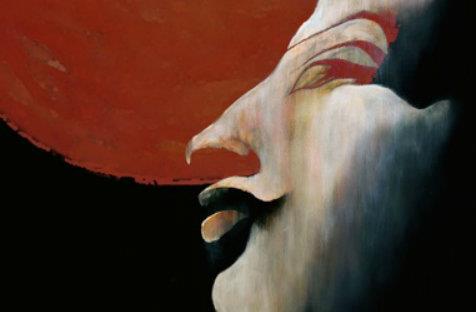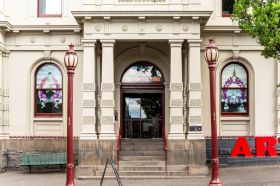Any presentation of opera scenes which tells of changes in leadership, ideology and social policy resonates well in our current Australian climate.
This adaptation of Phillip Glass’ 20th century opera did that. Presented by Ondine Productions, this was a semi-staged event accompanied by the Thoroughbass Ensemble, featuring recorders, two violas da gamba, baroque cello, harpsichord and percussion – a significant change to the original instrumentation. However, this innovation succeeded and treated the pre-election audience to Glass’ genius and a refreshingly intimate minimalist excursion into the life of Tutankhamen’s father.
The skilled early music ensemble’s rendering of Glass’ original orchestral tone colours offered an effective alternative. Its nuances produced new hues referring to ancient times amidst the challenges of rendering Glass’ reiterations seamlessly with often undoubled instrumental lines.
The ensemble supported the vocalists well. Very fine voices burst forth from Glass’ textural tapestry in this appropriately costumed and choreographed court.
Anna Fraser’s soprano voice crowned many Glass fanfares in the powerful style demanded by this composer. David Crowden’s countertenor was expressive as Akhnaten in solo and ensemble chants, especially in the middle to high register. Hester Hannah’s fine voice and elegant acting contributed well to ensemble moments, especially in the love duet.
Other court soloists were solidly sung and the range of languages, texts and syllabic fragments were precise. An interesting and at times beautiful exchange of motives and chordal intensity with the ensemble ensued.
This performance event also introduced the use of fine perfume, no doubt an extra-musical treat ancient Egyptian royalty would approve of. As non-royal citizens we were subject to a custom-made fragrance in the environs of the performance. We were also gifted a sample, as if receiving fine things at the appearance of the ruling family.
Out of all the innovation in interpretation and performance practice, it was Glass’ inimitable genius which emerged. This expressive biography impressed in the well-selected and rendered scenes we were fortunate to see performed. It left me craving the entire opera – fully staged – and repeat performances of Ondine Productions’ evocative and imaginative version.
Ondine Productions present
Hymn to the Sun: Scenes from Akhnaten by Phillip Glass
David Crowden: countertenor
Anna Fraser and Hester Hannah: sopranos
Mark Donnelly: baritone
Adam Majsay: tenor
Inara Molinari: mezzo-soprano
Accompanied by Thoroughbass Early Music Ensemble
Diana Weston: Music Director and harpsichord
Alicia Crossley and Joanne Arnott: recorder
Shaun Ng and Catherine Upex: viola da gamba
Angus Ryan: baroque cello & The Narrator
Steven Machamer: percussion
Oscar Molinari: design
Perfumes created by Chiaki Nomura of International Flavors & Fragrances
Sydney Conservatorium of Music
28 July






